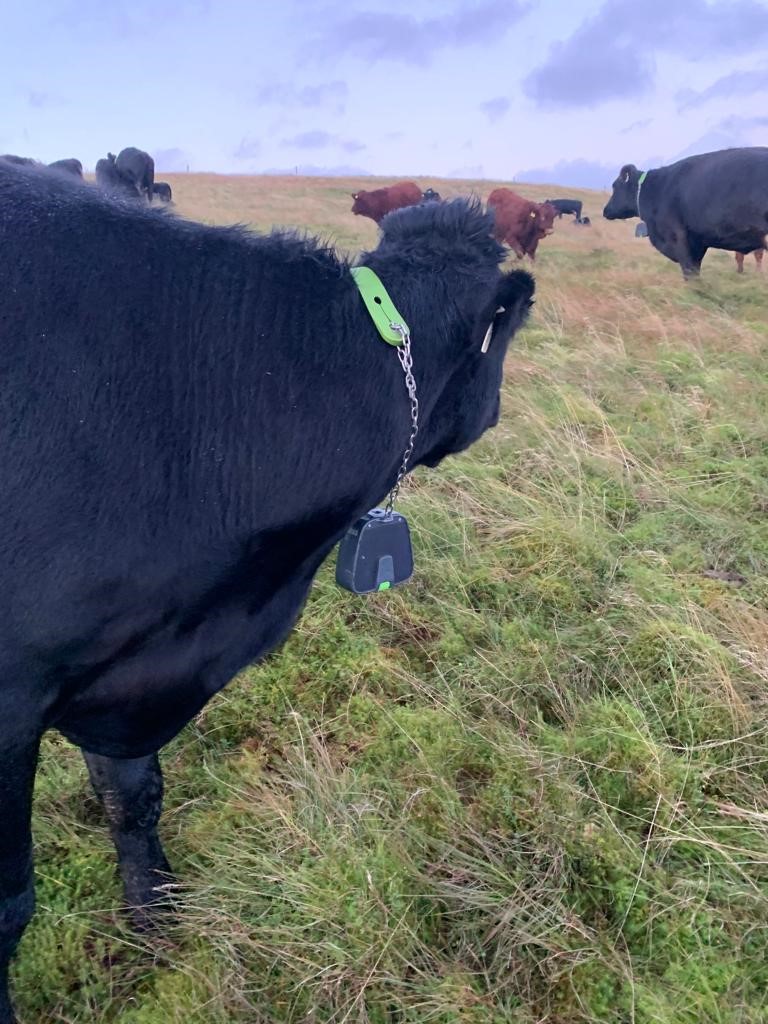Virtual Fencing
30 March 2023This case study gives a real life example of how David Whiteford of Maxwelston Farm, South Ayrshire has used virtual fencing to improve his beef and sheep business and the lessons he has learnt along the way.

David Whiteford farms at Maxwelston farm, Dailly, South Ayrshire with the farm extending to 809ha (2,000 acres). He operates a beef and sheep system of 200 cows and 1,000 breeding ewes. Historically cattle were housed and hill grazing was utilised by Blackface ewes. After a business review it was clear that there was a need to improve the profitability of both the beef and the sheep systems. The requirement for each system was different, while the sheep system needed to generate more output, the beef system’s main challenge was to reduce the cost of wintering cows, while achieving high growth rates in calves at grass through the summer. Although the challenges were different, the solution was the same. The farm needed to be “flipped on its head”. Hill ewes were removed from the system with a low ground flock of ewes taking their place freeing the hill ground up to be utilised by suckler cows on a deferred grazing system.
The developments at Maxwelston were supercharged in 2021 when David invested in Virtual fencing collars (helped by the Digital boost grant). In the winter of 2022-23, 130 cows grazed 1,300 acres of deferred grass and the collars allowed the cattle to graze the hill through the winter with the worst areas eaten first and the best areas saved for later in the winter, closer to calving. The collars also act as a GPS locator and an early warning system for problem cows. While their use has been a step forward for the business, it is dependent on having the right cow and the right hill, this system is not for everybody or every farm. The winter for 2022-23 was a challenging one to graze through and David has learned some lessons and will further develop the system. In future years, David will add in an element of bale grazing into the system to ensure cows come out the winter in ideal body condition.
By grazing with collars, David can adapt the system on a daily basis. This system allows quality forage to be deferred to later in the winter when stock needs are greater and cattle can also be made to eat poorer quality areas of the hill earlier in the year when demands are lower. This has a significant benefit to business performance and also to biodiversity. “Virtual fencing collars bring a degree of control to managing hill grazings that has never been available before. It’s a revolution but it’s not a plug and play solution, you have to invest time in training stock and people and be on your toes to adapt the system to get the most out it”.

David has operated a loose rotational grazing system at Maxwelston for several years. However, the farm is difficult to fence with polywires due to multiple deep gullies across the farm. This has been a frustration of David’s for many years. However, the collars have eliminated the need for polywires and means that subdivision is a job that takes a few seconds rather than a few hours. Calves also get a huge benefit from forward creep grazing. They are unbound by a collar but are bonded to their mother, this means they drift into the next paddock and graze the highest quality material without the need for wires. They always return to their mother to suckle, “with fresh grass in front of them and fresh milk behind them, they don’t wander far”. The virtual fencing system is phenomenal for summer grazing.
Sign up to the FAS newsletter
Receive updates on news, events and publications from Scotland’s Farm Advisory Service
